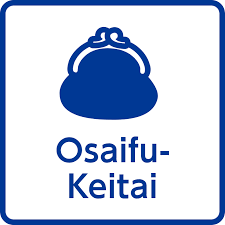7 things you need to know about the Japanese retail market
by Sukey Miller

With a heightening focus from the major western retailers on the Japanese market, Bango has compiled a list of 7 key facts you need to know when expanding into the Japanese retail market.
1. Credit cards are not the dominant payment method
While credit cards remain an established and accepted payment method, they are not the holy grail for Japanese consumers, especially for online shopping. The emergence and importance of diversifying payment methods for e-commerce in Japan is more apparent than ever. Japanese customers are moving away from credit card usage faster than any other country. Since 2013, the volume of credit card usage for online retail has fallen by over 23% while there has been a surge of new payment methods (Statista, 2017).
2. Mobile payments are vastly adopted, especially by millennials
In Japan, using Osaifu keitai (mobile wallets) is the norm along with Direct Carrier Billing (DCB), Android Pay and other alternative payment methods. They are widely adopted for services such as online retail, public transport,  gaming and numerous other sectors. Often referred to as the epicentre of mobility, Japan has always been preferential towards mobile payments. Osaifu keitai are the leading alternative payment option due to the Japanese market’s high adoption and reliance on smartphones. The dependence on smartphone payments has been solidified with those aged 17-25 using osaifu keitai as the leading payment method within the highest revenue generating areas, including the fashion retail and gaming sectors. This age bracket also has an innate hesitancy in using credit card payments due to security concerns.
gaming and numerous other sectors. Often referred to as the epicentre of mobility, Japan has always been preferential towards mobile payments. Osaifu keitai are the leading alternative payment option due to the Japanese market’s high adoption and reliance on smartphones. The dependence on smartphone payments has been solidified with those aged 17-25 using osaifu keitai as the leading payment method within the highest revenue generating areas, including the fashion retail and gaming sectors. This age bracket also has an innate hesitancy in using credit card payments due to security concerns.
3. Cash-on-delivery is an exception to the alternative payments rule, but it’s evolving
With uncertainty towards using credit cards, Japanese consumers have had to adapt. Most Japanese users have historically opted to ‘pay on delivery’ with cash, cutting out the risks of using a credit card. In fact, cash-on-delivery has been the preferential payment method in recent years for many Japanese customers when mobile payments are not available. However, the cash-on-delivery system is archaic for younger generations who are always looking for a mobile centric alternative. An example of cash-on-delivery evolution is the Bango Platform allowing users to purchase through storefronts such as Amazon, using their mobile phone bill to pay. Through mobile payments, many more users are finally able to use their preferred payment instrument to fully engage with digital and physical goods.

4. Operator spend limits are much higher, opening the doors for a wider range of services
Due to a reliance on mobile payments across both physical and digital retail markets, Japanese Mobile Network Operators (MNOs) allow much higher spend limits compared to providers in Europe and America. Typically, a European mobile spend limit would be around $50, in American it is around $100. In Japan, users typically have upwards of $300, reaching $1,000 spend limits per month. This means Japanese smartphone subscribers can purchase a much higher volume and significantly higher priced products such as luxury goods using their mobile phone bill.
5. Average Revenue Per User is one of the highest worldwide
The Average Revenue Per User (ARPU) for e-commerce in Japan tops $1,600, the highest recorded in Asia and the 4th highest in the world (Mobile Marketing, 2017). There are many factors affecting this level of spend. Most notably, the advanced data infrastructure which allows unparalleled access to high speed internet at any time. Moreover, the second-to-none retail logistics systems typically sees same day or next day delivery for online retailers. On top of the highly-advanced payments and delivery experience, cultural reliance and acceptance of online retail is the leading consumer-side influencer of this spend. Western brands are rushing to Japan to capitalize on their popularity in the market as Japanese end-users spend heavily on the latest luxury goods, greatly influenced by the USA and UK trends such as streetwear and high fashion.
6. E-commerce in Japan is one of the fastest growing markets worldwide
Data from Statista highlights that online e-commerce in Japan is the fastest growing market by some distance, closing in rapidly on China and the UK for overall penetration. Over 80% of the population regularly shop online. This meteoric rise has been created by a mix of the country’s cultural shift towards empowerment of payment methods, a growing middle class who have adopted online retail and the reliance of e-commerce over physical storefronts for imported goods. As the market continues to develop and expand, alternative payment methods will be essential for a storefront because the newer generation in Japan are steering away from traditional payment methods. Having no mobile payment option will alienate this user base.
7. Users turning to DCB for e-commerce expected to lead charge of market growth
According to Business Weekly, “Japan is the world’s biggest market for carrier billing driven by commercially astute mobile operators”. Purchases via mobile devices and DCB are highlighted by various sources as a key growth driver for the Japanese e-commerce market until 2021. Many innovations have taken place in the sector. For example Amazon, the largest online retailer has enabled DCB for physical goods through Bango. While Western brands are seeing huge success in the market, they will need to be ready for imminent changes in user spending habits. Domestic retailers are heavily integrated with alternative payment methods such as DCB, and these retailers are seeing huge success through a diversified range of payment options. Ensuring mobile payment options are available will be essential for the sustained growth and success required in the Japanese market.
– Josh Spoelstra, Bango
Subscribe to our newsletter
Get the latest subscription bundling news and insights delivered straight to your inbox.



